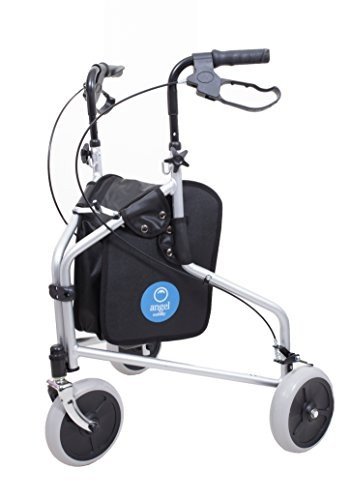5 Laws Everyone Working In Buying Mobility Scooter Should Know

A Comprehensive Guide to Buying a Mobility Scooter
Mobility scooters have become a vital tool for lots of people aiming to boost their self-reliance and mobility. With a huge range of models and features readily available, selecting the best mobility scooter can be intimidating. This article supplies a useful guide to help customers navigate their options, evaluate their needs, and make an informed purchase.
Understanding Mobility Scooters
Mobility scooters are electric cars designed for individuals who experience mobility challenges. They are particularly beneficial for senior citizens, those with specials needs, or individuals recuperating from injuries. Mobility scooters can differ commonly in regards to design, functions, and prices.
Kinds Of Mobility Scooters
Before embarking on a purchase, it's vital to comprehend the different types of mobility scooters available:
Three-Wheel Scooters:
- Generally more maneuverable in tight areas
- Lightweight and portable
- Suitable for indoor use
Four-Wheel Scooters:
- Offer greater stability and balance
- Appropriate for outdoor usage over various terrains
- Typically have a longer battery life
Foldable/Portable Scooters:
- Designed to be quickly transported and saved
- Can frequently fit in the trunk of a vehicle
- Perfect for those who take a trip frequently
Sturdy Scooters:
- Built to accommodate bigger people
- Often featured more robust features for outdoor usage
- Usually equipped with larger batteries for extended variety
Elements to Consider When Buying a Mobility Scooter
1. Weight Capacity
Pick a mobility scooter that can support the user's weight. A lot of scooters have a weight limit ranging from 250 to 500 pounds. It is crucial to ensure that the scooter can accommodate the user conveniently.
2. Variety and Battery Life
The variety is how far the mobility scooter can take a trip on a single charge. Common ranges differ in between 10 to 30 miles. Consider the user's day-to-day activities and select a scooter with an appropriate range.
3. Scooter Dimensions
Think about the size of the scooter, including its weight and dimensions. A more compact scooter may be ideal for narrow hallways and tight spaces, while bigger models provide extra stability and comfort.
4. Surface Capability
Examine where the scooter will mainly be used. If the user prepares to take a trip primarily on pavement, a lightweight model might be sufficient. However, if the user needs to pass through gravel or uneven surfaces, consider a four-wheel scooter constructed for off-road usage.
Leading Features to Look For
Convenience
- Adjustable Seats: Look for scooters with cushioned and height-adjustable seats to ensure comfort during travel.
- Armrests: These improve security and support while browsing.
Safety and Visibility
- Headlights and Taillights: Essential for nighttime usage.
- Turn Signals and Reflectors: Improve visibility and security while on the roadway.
User-Friendly Controls
- Joystick or Drive Controls: These must be intuitive and simple to control.
- Easy-to-Read Displays: A control board that shows battery life, speed, and range can boost the user experience.
Extra Features
- Storage Compartments: These use included convenience for bring individual products while on the go.
- Weather condition Protection: Consider models with rain covers or windshields if utilized in variable climate condition.
Expense Considerations
When budgeting for a mobility scooter, prices can range anywhere from ₤ 500 to over ₤ 5,000 depending on the design, features, and brand name. Extra expenses might include:
- Extended Warranty: Protects against problems and can conserve money in the long run.
- Devices: Optional features, such as updated seats, lights, or storage services.
| Feature | Cost Range |
|---|---|
| Standard Models | ₤ 500 - ₤ 1,500 |
| Mid-Range Models | ₤ 1,500 - ₤ 3,000 |
| High-End Models | ₤ 3,000 - ₤ 5,000 |
Funding Options
Lots of retailers use funding plans, and some city government initiatives might offer grants or help for those in need. Investigate potential monetary support with community resources or mobility service organizations.
FAQs about Buying a Mobility Scooter
What is the distinction between a mobility scooter and a wheelchair?
Mobility scooters are motorized and enable users to browse separately, while wheelchairs may require physical help or manual operation.
How do I maintain a mobility scooter?
Routine maintenance involves checking battery life, cleaning up the scooter, and examining tires and brakes. Always describe the user handbook for particular standards.
Can mobility scooters be used indoors?
Yes, many models are created for both indoor and outside usage. Nevertheless, three-wheel scooters tend to be much better fit for indoor navigation due to their tighter turning radius.
Are mobility scooters covered by insurance?
Some insurance coverage plans cover a part of the expenses for mobility scooters if they are considered medically needed. Contact your supplier for specific details.
How quick can a mobility scooter go?
Most mobility scooters have an optimal speed varying from 4 to 8 miles per hour. Nevertheless, the appropriate pace may differ depending on regional policies.
Getting a mobility scooter can significantly boost one's independence and lifestyle. By comprehending the types, features, and costs related to mobility scooters , potential purchasers can make well-informed decisions that suit their requirements and choices. Customization and comprehensive research are essential to guaranteeing fulfillment with this important investment.

